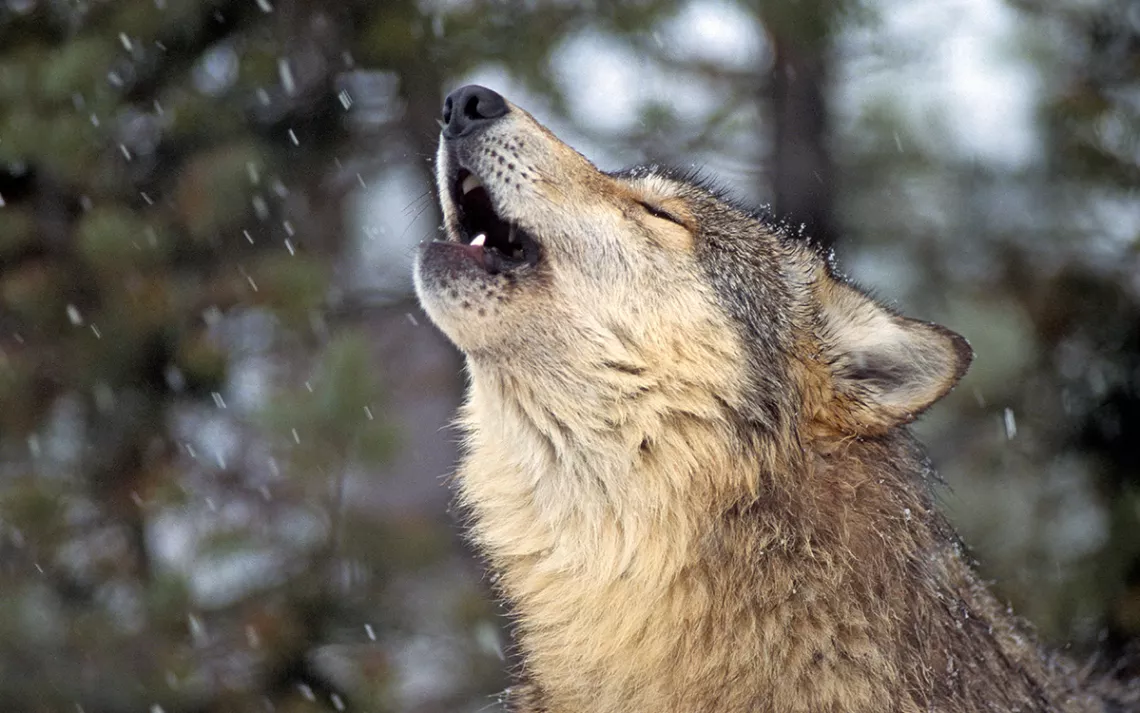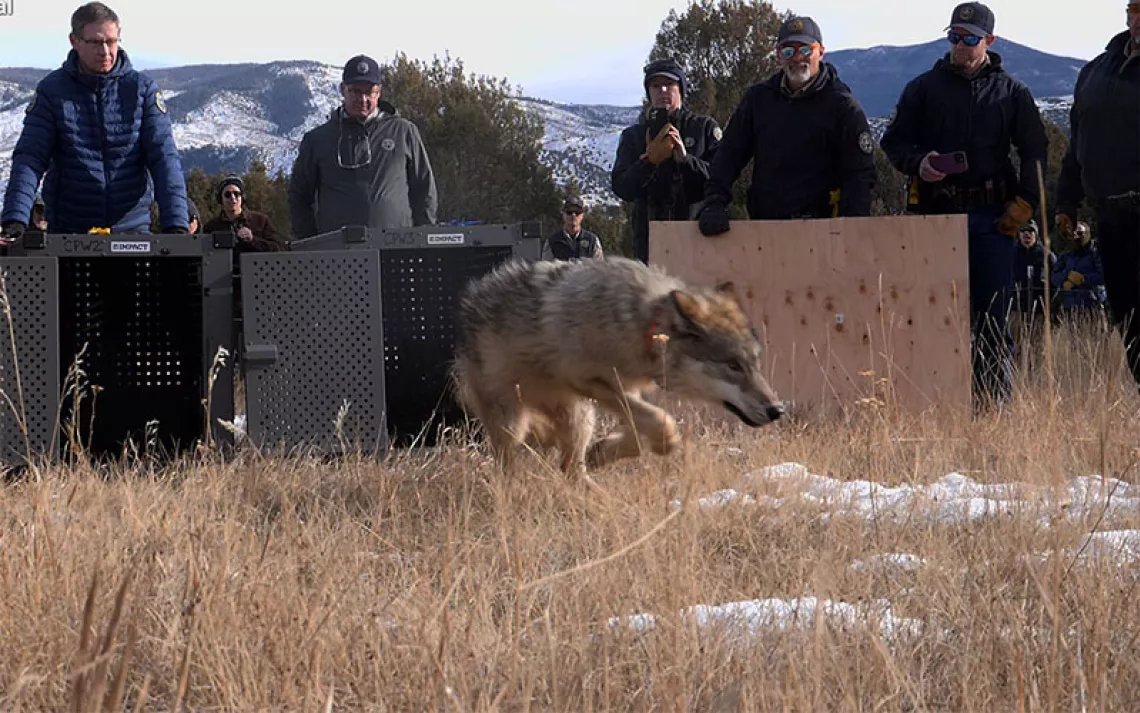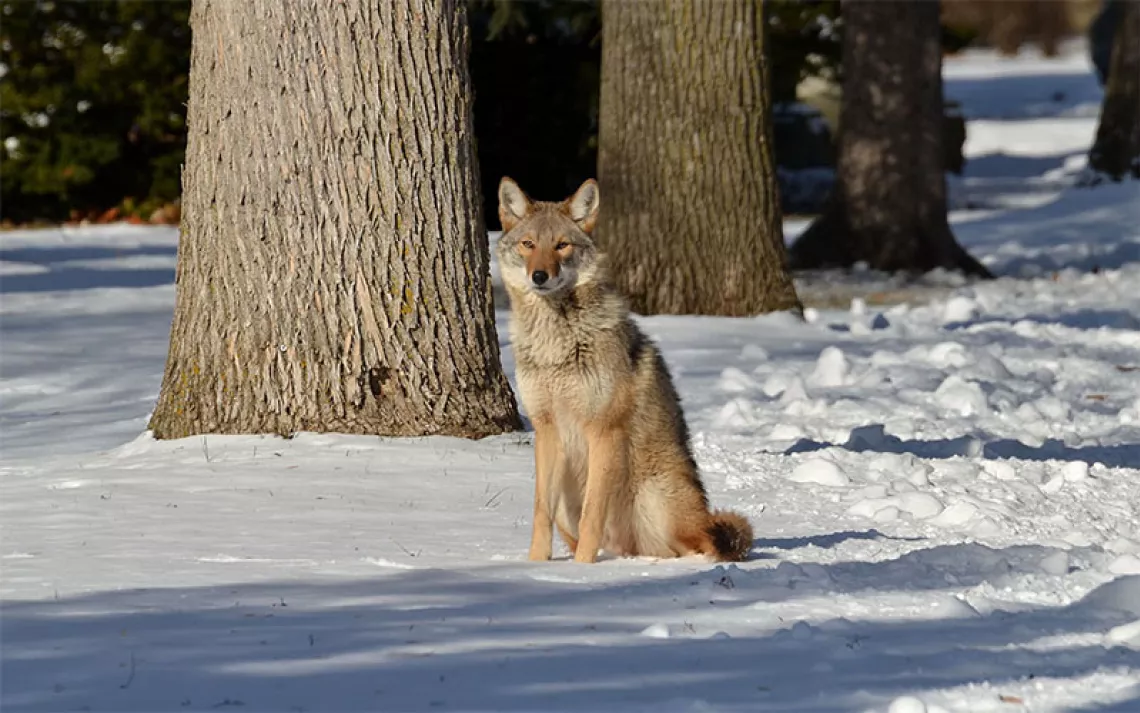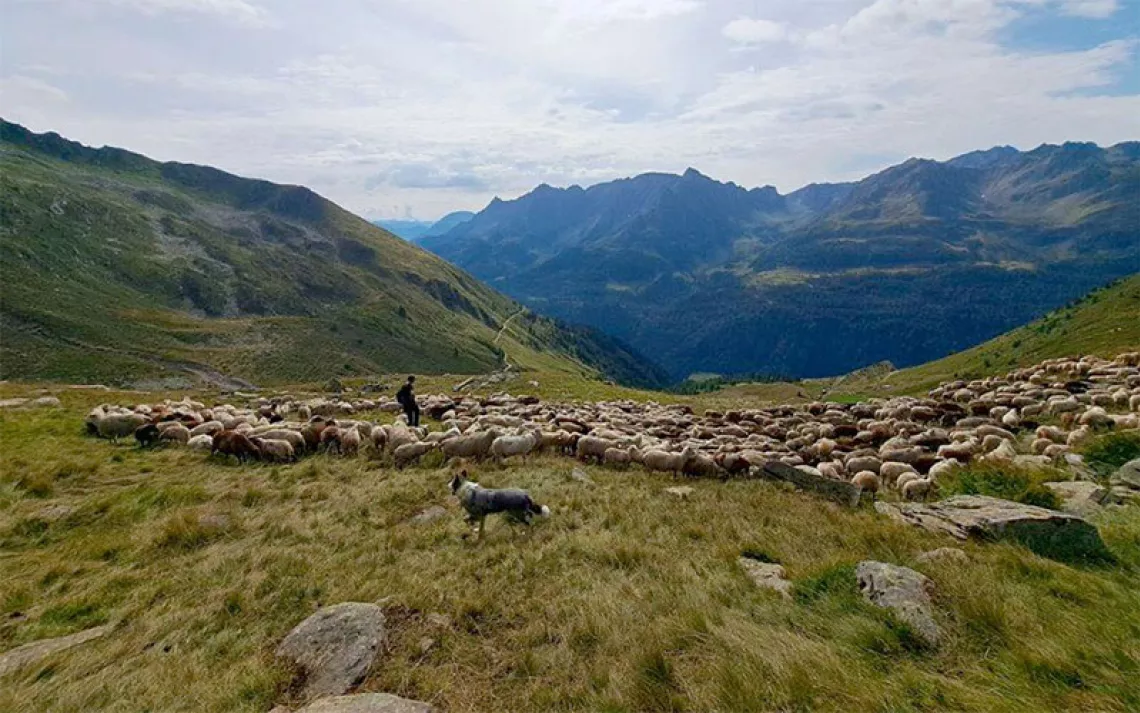Colorado Finally Has a Plan to Reintroduce Wolves
When, where, and how wolves will be released later this year

Gray wolf | Photo by Keith Szafranski
More than two years after voters in Colorado passed a resolution to bring wolves back to the area, the state’s wildlife commission finally has a plan in place to have paws on the ground by year’s end. The commission approved its final plan earlier this month to the delight of many wolf advocates, who, like most stakeholders, admit the plan is imperfect but better than most. The forthcoming Colorado reintroductions mark one of the most significant steps in wolf rewilding since wolves were returned to Yellowstone National Park more than 25 years ago.
“I wouldn't say it's the best plan of any state that has wolves, but it's one of the better ones,” says Matt Barnes, a range scientist and wildlife conservationist who served as a member of Colorado Parks and Wildlife’s wolf stakeholder advisory group. “There's definitely room for improvement, but the plan is good enough to get wolves on the ground.”
Here’s what’s in that plan: Starting in December, Colorado Parks and Wildlife (CPW) plans to release between 10 and 15 wolves annually, every winter, for the next three years, with the goal of establishing a self-sustaining population. Wolves will be released on state and private lands that are far from humans and have abundant elk to prey on. Additionally, these areas will be at least 60 miles from any neighboring states to deter cross-border migration. This strict criterion has resulted in two release areas at the center of the state.
But where these wolves will come from is anyone's guess. The agency noted that the northern Rocky Mountain states of Idaho, Montana, and Wyoming would be ideal. However, the day the final plan was announced, Wyoming's governor said he had no interest in supplying wolves to Colorado. The best candidates for sourcing wolves will likely be individuals from Washington and Oregon, where wolves have established themselves. According to Travis Duncan, the public information supervisor for CPW, the state will start formal conversations with collaborative states in the coming months.
One area in which Colorado has differed from other states, Barnes says, is the impact-based model that will guide day-to-day wolf management. Instead of trying to manage wolves at a certain number or restrict them to particular areas—as is common in other states—wildlife officials in Colorado will manage wolves on a case-by-case basis, depending on the effects they’re having on livestock and wildlife. “So, if we have 4,000 wolves and they're not causing any problems, then there is no problem. You can't say there are too many wolves,” Barnes says. “But if we have 400 wolves, and they are causing problems, and there's conflict everywhere, then you definitely have a problem.”
If problems such as chronic livestock predation persist, the state plans to use a suite of tools that include everything from education to authorized killing, which would be a last resort. In between those two things, the state wants to use nonlethal deterrents to avoid conflicts before they start. Tools like fladry, strips of tape hung from fencing; wavy tube men, as seen at your local car dealership; and even range riders (cowboys guarding livestock) would be deployed by the state.
How to fund these programs will likely be an ongoing conversation between the CPW and conservation groups. Just days after the plan was released, the state legislature passed a bill to create the "Born to Be Wild" special license plate, which will fund conflict minimization and was put together with support from the Rocky Mountain Wolf Project and state agencies. Yet another source for communities learning to live with wolves is the Wolf Conflict Reduction Fund established by the Center for Human Carnivore Coexistence at Colorado State University.
“The plan has much less detail on livestock conflict minimization than it does on other issues, like livestock compensation or response to chronic depredation,” Barnes says. “That can be addressed in the first revision of the plan, which we expect to happen in the next few to several years.”
The relative lack of information on conflict minimization isn’t the only concern held by close watchers of Colorado’s wolf plan. Some conservation groups and advocates wonder whether certain aspects of the plan will actually support long-term recovery. For instance, Kaitie Schneider, the Colorado wolf representative at Defenders of Wildlife, questions the low bar for removing state protections. Wolves would be downgraded from the state’s endangered list to threatened when wolf numbers reach 50 for four years in a row. (This would not affect their status under the federal Endangered Species Act, which protects wolves outside of the northern Rockies, including Colorado.) Once the Colorado wolf population reaches 150 for two successive years—or 200 for any period—wolves could be delisted as a non-game animal, meaning a non-hunted species.
“Models estimate that Colorado may be able to support upwards of 400, 700, 1,500 wolves,” says Schneider, whose organization advocated for a focus on coexistence and nonlethal measures for conflict resolution. “So, to be delisted at 150, we thought was low.”
Other wolf advocates, like Delia Malone, the wildlife chair of the Sierra Club’s Colorado Chapter, have called the state’s impact-based management more of the same when it comes to resolving conflict. What the state has essentially done is create an incentive for dead livestock, she says. Ranchers are paid up to $15,000 per dead cow, and could even be compensated for presumed losses. Even their vet expenses are paid by the state. Wolf relationships with other wild animals, like elk and deer, are similarly viewed through the lens of conflict. When numbers of wild prey dip below a certain threshold, the state may kill wolves.
The best current research, however, has found that wolves have a rather limited impact on both livestock and wild ungulates. Wolves are responsible for less than 1 percent of cattle deaths. And elk numbers are higher now in Idaho, Montana, and Wyoming than they were when wolves were first reintroduced to those states.
If Colorado is to avoid the mistakes created in other states, the state wildlife agency will have to rely less on killing wolves and more on coexistence measures, says Malone. Instead, the state should spend more energy focusing on the many benefits that wolves bring to ecosystems, including keeping elk and deer numbers in check, reducing diseases, and discouraging overgrazing.
“We know from decades of good peer-reviewed science that where wolves are present, and they're protected from human persecution, where they're present in robust numbers, where their social structure is maintained … that those wolves, in those situations, bring tremendous ecosystem benefit,” Malone says. “That cannot happen unless there are enough wolves distributed across the West Slope [of the Rockies] and their social structure isn't disrupted by lethal management.”
To help evaluate the success of the program, CPW will track each newly released wolf with a GPS collar. While collaring every wolf won’t be possible as the wild population grows, breeding pairs will serve as beacons to help monitor pack movements. When reintroduction efforts cease, the state plans to monitor each pack and would like to see at least a 70 percent survival rate for reintroduced individuals.
Overall, most wolf advocates involved with the state’s efforts feel that Colorado is well positioned to successfully bring back wolves.
“I'd rather this plan be a good compromise for all stakeholders than be perfect for any one side. I think that shows a really balanced plan,” Schneider says. “We hope this is a starting point and a foundation that gets better from there, but I think this is a really good start.”
 The Magazine of The Sierra Club
The Magazine of The Sierra Club



